Top Metrics to Measure the Success of B2B Account-Based Marketing Services
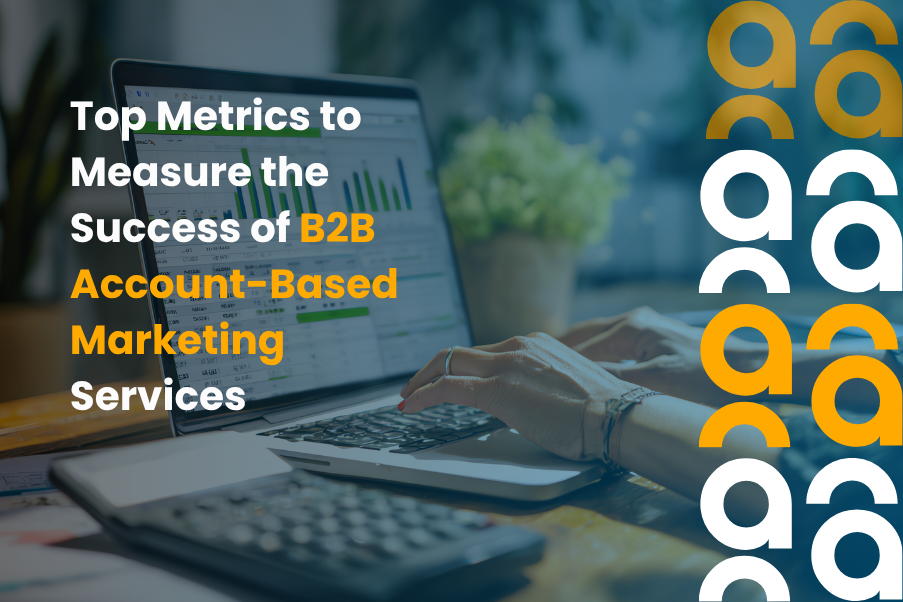
Introduction
Every B2B marketer has faced the same boardroom question: “How do we know ABM is really working?” You might have clicks, downloads, or ad impressions ready to show, but leaders don’t want vanity numbers. They want to see if your program is winning the right accounts, creating real opportunities, and contributing to revenue.
That is where b2b account-based marketing services shift the focus away from surface-level metrics and toward measurable business outcomes: higher engagement across decision makers, faster deal cycles, bigger contracts, and visible ROI.
In this blog, we’ll walk through the top metrics you should track to demonstrate ABM success, backed by fresh insights and practical takeaways for US-based B2B companies.
Vanity metrics vs. impact metrics
Numbers like website visits and email opens can be helpful, but they don’t tell you if ABM is making a difference at the account level. Executives want to know if your target accounts are engaging, if decision groups are covered, and if opportunities are growing.
By tracking the right measures, b2baccount-based marketing services connect marketing actions directly to sales impact. This approach creates a language that both marketing and revenue teams can trust.
1) Account engagement score and penetration
Account engagement scoring is the foundation of ABM measurement. It aggregates actions such as webinar registrations, high-value page visits, event participation, and meetings to reflect the overall interest from a target account.
Penetration then shows how many accounts in your target list are meaningfully active. This is critical because modern buying decisions involve many people. Research shows that an average of 13 individuals now participate in a typical B2B buying decision, which means engagement must extend across roles and departments.
How to apply it:
- Weight high-value actions like demos and executive meetings more heavily.
- Benchmark penetration by account tier and track progress month by month.
- Share weekly “high-score accounts” with your sales team so they act on live signals.
By putting engagement at the center, b2b account-based marketing keeps your focus on signals that connect to real revenue, not noise.
2) Buying committee coverage
If your program reaches only one or two people in a large company, your chances of winning are slim. Coverage tracks how deeply you’re engaging the actual buying committee.
A healthy ABM program identifies key roles like economic buyers, technical evaluators, finance, procurement, and influencers, then ensures each group receives targeted engagement.
To help teams new to ABM, keep a simple explainer on what is b2b account-based marketing is in your internal playbooks. Framing ABM as a strategy to influence complete committees, not just leads, makes coverage metrics easier to understand.
A strong b2b account-based marketing agency should also provide enrichment data to uncover hidden stakeholders and deliver campaigns that bring new roles into the conversation.
3) Pipeline influence and attribution
Proving ABM’s role in generating opportunities is where confidence grows. Pipeline influence shows how your campaigns contribute to both new and existing deals.
- Sourced pipeline captures opportunities that begin after ABM activity.
- Influenced pipeline tracks deals already in motion but strengthened by ABM touches.
A recent benchmark found that about 54 percent of ABM programs now use both sourced and influenced attribution models, moving away from single-touch reporting.
How to apply it:
- Agree on what qualifies as influence, such as multi-channel touches within 30 days.
- Standardize campaign tags to keep reporting consistent.
- Review attribution by account tier to identify where ABM delivers the most impact.
If you’re partnering with a b2b account-based marketing agency, make sure the attribution setup fits your CRM and finance requirements.
4) Conversion from engaged account to opportunity
Engagement is powerful, but without conversion, it doesn’t matter. This metric measures how many engaged accounts progress to qualified opportunities.
Breaking it down by account-based marketing types, such as 1:1, 1:few, and 1:many, helps you see which motion drives better outcomes.
Practical steps:
- Alert SDRs when intent signals surge across multiple stakeholders.
- Trigger executive outreach after large-scale engagement events.
- Equip sales with engagement reports that summarize what the account cares about most.
This is one of the clearest ways to prove the impact of b2b account-based marketing services, because it links marketing directly to pipeline creation.
5) Deal velocity
Velocity reflects how quickly opportunities move through the pipeline. By comparing ABM-influenced deals with non-ABM deals, you can show how targeted efforts accelerate decisions.
Teams that combine ABM with coordinated account-based advertising report win rate lifts of around 60 percent, showing how aligned outreach influences speed and outcomes.
How to apply it:
- Measure stage-to-stage conversion times.
- Track opportunity age at each stage.
- Share velocity metrics in sales meetings to highlight ABM’s effect on shortening cycles.
Faster velocity reassures leadership that ABM is not only generating interest but also helping deals close more quickly.
6) Average contract value and expansion
ABM focuses on high-value accounts, so deal size is a natural measure of success. Compare the average contract value for ABM-influenced deals against a like-for-like set of non-ABM deals.
One industry study reported that about one-third of companies using ABM saw an 11 to 20 percent lift in deal size, with others reporting higher gains.
How to apply it:
- Break down ACV by account-based marketing types to find where value is highest.
- Use insights to guide sales plays in specific industries.
- Report contract value alongside pipeline influence to create a fuller picture.
By consistently proving larger deal sizes, ABM strengthens its role as a driver of sustainable growth.
7) Revenue contribution and ROI
Revenue contribution is the ultimate proof point. It connects ABM spend to closed business and demonstrates return on investment.
Multiple benchmarks show that ABM delivers higher returns, with 81 percent of organizations reporting better ROI than other marketing approaches.
How to apply it:
- Align ROI models with finance at the start.
- Measure both sourced and influenced revenue.
- Share quarterly reviews to keep leadership confident in ABM’s role.
When presenting results, keep a short primer on what is b2b account-based marketing is in executive decks to remind stakeholders how account-level influence differs from lead-based models.
A quick guide to account-based marketing types
Here’s a simple breakdown of account-based marketing types that leaders can use to match tactics to goals:
- 1:1: Strategic accounts receiving fully personalized campaigns.
- 1:few: Small groups of accounts targeted with industry or role-based content.
- 1:many: Larger named lists influenced through data-driven personalization.
Match the right type with account value and sales coverage so your b2b account-based marketing services plan always aligns with measurable business goals.
How modern services prove value
Leading b2b account-based marketing services deliver measurable impact through:
- Intent data to detect accounts actively researching solutions.
- Multi-channel orchestration across email, ads, social, and sales touches.
- Attribution models that assign credit accurately across channels.
- Shared dashboards that sales and marketing review together.
Any capable b2b account-based marketing agency should provide this structure upfront, making measurement part of the engagement from day one.
Choosing the right partner
When evaluating providers, look for firms that deliver proof against your metric framework. Ask for scorecard samples, case studies, and references.
The best b2b account-based marketing agency will show a track record of moving accounts from engagement to opportunity, accelerating velocity, and raising deal values. Evaluate them regularly on revenue outcomes, not activity alone.
Almoh Media ABM services
Almoh Media provides b2b account-based marketing services purpose-built for US B2B firms with complex sales. Here is the outline when we run your program:
- Strategy and ICP clarity: We define segmented target lists and align plays to account-based marketing types such as 1:1, 1:few, and 1:many.
- Intent-driven activation: We combine your first-party signals with third-party intent to focus outreach where research activity is rising.
- Coordinated campaigns: Our team runs email, paid social, targeted display, content offers, and executive touch programs that support your field and inside sales rhythm.
- Attribution and analytics: We implement sourced and influenced reporting inside your CRM with a clean taxonomy, then share scorecards that sales leaders can use daily.
- Quarterly optimization: We test subject lines, offers, formats, and outreach sequences to raise conversion rates in your b2b account-based marketing services scorecard.
Read more on our account-based marketing services and ask for a sample scorecard that mirrors your pipeline stages.
Bringing it together
When measured with the right framework, ABM shifts the conversation to business impact. Focus on:
- Account engagement and penetration
- Buying committee coverage
- Pipeline influence and attribution
- Conversion from engagement to opportunity
- Deal velocity
- Average contract value
- ROI and revenue contribution
By keeping these front and center, your b2b account-based marketing services program will prove its value across sales, marketing, and finance.
Call to action
Want ABM metrics your leadership team can rely on? Partner with Almoh Media. Our b2b account-based marketing services team will help you track engagement, coverage, pipeline impact, velocity, and ROI with clarity that drives growth. Contact us today.
Introduction
If you’re using content syndication, chances are you see it as just another way to get your content in front of more eyes. That’s fine, but there’s a lot more hidden beneath the surface. When you allow its full potential, content syndication ROI can surprise you, and it doesn’t take much to shift perception.
Let’s look at fresh data, outline a winning content syndication strategy, and show how U.S. B2B teams can get real value from it. Let’s begin!
What Is Content Syndication?
At its simplest, content syndication means sharing your B2B content: whitepapers, case studies, blogs on someone else’s site or network. This can be paid or free. You expand your reach, tap into new networks, and generate visibility, often reaching audiences you’d otherwise miss.
Why ROI From Content Syndication Deserves a Second Look
1. Huge lead production for relatively low spend
According to recent studies, the average cost per lead with content syndication is around $43. That’s far lower than other tactics, so even moderate conversion rates can offer solid returns.
2. Fast pipeline growth
Some platforms report that customers see 300–500% return on investment within three years. That’s not fluff – it’s real pipeline growth.
3. Verified conversion tracking methods
With UTM tagging and targeted vendor reports, U.S. marketers can track everything from initial syndication click to closed deal.
4. Built-in trust and positioning
Syndicating through known sites can give you indirect credibility, boosting brand awareness and authority without extra effort.
B2B Content Syndication Strategy: How to Do It Right
A good content syndication strategy starts long before content hits a third-party platform:
a). Pick assets that matter
Whitepapers, case studies, and long-form guides work best. They not only attract interest but also help establish your brand as industry-relevant.
b). Target lead quality, not rush volume
Instead of chasing clicks, target professionals. For example, top B2B firms average a 5.31% conversion rate on syndication offers.
c). Tag everything with UTM links
Measure traffic, engagement, bounce rates, and conversions back at your URL. This helps with syndication attribution.
d). Track core metrics
- CPL (cost per lead)
- MQL-to-SQL conversion rates
- Revenue per lead (use your average contract value)
e). Use the ROI formula
ROI= Revenue−Spend
Spend
For example, $1,000 spent → 50 high-quality leads → $5,000 average value = ($250k – $1k)/$1k = 249× ROI.
f). Optimize, rinse, repeat
Check what works by audience, site, and format. Then double down and drop what doesn’t.
Concrete U.S. ROI Stats You Can’t Ignore
| Metric | Statistics/Insight |
| Cost per lead | $43 average CPL |
| Syndication conversion rate | ~5.31% typical |
| Lead-to-deal conversion lift | 45% increase when focus is on quality |
| ROI over 3 years | 300%–500% reported |
| Projected industry growth | From $4.7 B in 2022 to $5.9 B by 2030 |
Content Syndication for Lead Gen: A Step‑by‑Step Plan
1. Define your ideal audience
Use buyer personas: titles, sectors, company size – so your content finds the right hands. This way, a sharper audience focus helps eliminate wasted spend and improves downstream lead quality.
2. Pick content with substance
Original research, how-to guides, competitive whitepapers – these both educate and convert. Plus, assets that solve specific problems tend to drive stronger engagement and more intent-driven leads.
3. Choose partners wisely
Use third-party platforms to reach U.S. B2B audiences. Look for those offering clear lead reporting and media kits. Before moving forward, ask for case studies or past performance metrics to make a more informed decision.
4. Structure campaigns with UTM tags
Make distinct tracking links for each partner and asset. This makes sure it’s easier to attribute leads, identify top performers, and compare ROI across channels.
5. Launch and monitor
Track CPL, CPL-to-SQL, cost per opportunity, pipeline driven, and revenue tied. At the same time, monitor activity in real-time to catch early trends and shift strategy fast if needed.
6. Review and refine monthly
Use metrics to shift spend toward top performers and tweak underperformers. As a result, consistent optimization keeps your syndication efforts aligned with revenue goals, not just vanity metrics.
How to Calculate Content Syndication ROI
- Calculate total spend (vendor fees + internal costs).
- Count total leads.
- Multiply leads by average deal size for potential revenue.
- Apply the ROI formula:
Revenue−Spend
Spend - Compare ROI over time to benchmark your initiatives.
This method is backed by multiple calculators and case studies.
Hidden Content Syndication Benefits
- SEO gains: Backlinks from quality sources can raise domain authority.
- Brand authority: Recognition on respected sites = credibility.
- Extended content life: A blog post can live on for months if syndicated well.
- Nurture acceleration: Leads from syndication are often further along in buying cycles.
Mistakes to Avoid and Fix Fast
Mistake: Only tracking clicks, not deals.
Fix: Tie every lead back to conversions with CRM integration. That way, you get a clearer picture of what’s actually driving revenue, not just traffic.
Mistake: Focusing only on cheap volume.
Fix: Go after quality; MQL-to-SQL rates matter most. Otherwise, your sales team will waste time on leads that won’t convert.
Mistake: Publishing irrelevant content.
Fix: Audit content – ensure tone, relevancy, and depth match syndication partner audiences. In doing so, you increase the chances of your content resonating with the right decision-makers.
Mistake: Not optimizing over time.
Fix: Regular performance review. Cut poor performers, boost winners. Over time, this helps improve ROI and keeps your content syndication strategy focused and results-driven.
Why Lead Quality Beats Volume
Not all leads are created equal. A smaller batch of high-intent leads can drive more revenue than a huge pool of low-interest ones.
Many B2B brands in the USA are shifting toward account- based syndication, where campaigns are matched to specific industries or companies. This helps improve conversion rates, shorten sales cycles, and increase customer lifetime value.
In short, prioritizing lead quality helps improve the long-term content syndication ROI, especially when targeting high-ticket accounts.
How AI Is Shaping the Future of Syndication
AI tools are starting to reshape content syndication strategy by analyzing behavior patterns and automating placements across high-performing channels.
With predictive scoring, marketers can now:
- Match content formats to individual user segments
- Forecast lead readiness using engagement scores
- Automate syndication at scale using content intent data
These innovations are raising the ceiling on what’s possible for B2B content syndication, especially for companies focused on measurable results.
About Almoh Media
Use metrics to shift spend toward top performers and tweak underperformers.
As a result, consistent optimization keeps your syndication efforts aligned with revenue goals, not just vanity metrics.
At Almoh Media, we specialize in high-impact content syndication for lead gen. We help B2B companies in the U.S. grow their pipelines by delivering:
- Verified lead generation from trusted channels
- Industry-specific targeting and campaign setup
- Transparent reporting tied to your sales funnel
- A proven strategy backed by real ROI
We understand the U.S. B2B buyer journey, and our syndication campaigns are built to generate demand, not just clicks.
Final Takeaway
Content syndication is an easy win if done smartly.
Focus on:
- Quality, not just volume
- Clear tracking and attribution
- Lead-to-deal conversions
- Continuous optimization
With $43 CPL, 5+ percent conversion, and long-term returns of 300–500%, most U.S. B2B teams can justify putting more budget behind it.
Ready to Get Real ROI from Content Syndication?
Let Almoh Media help you build a smarter lead-gen machine. We bring strategy, scale, and precision to content syndication – so your campaigns don’t just get seen; they convert. Reach out now to get started.
-
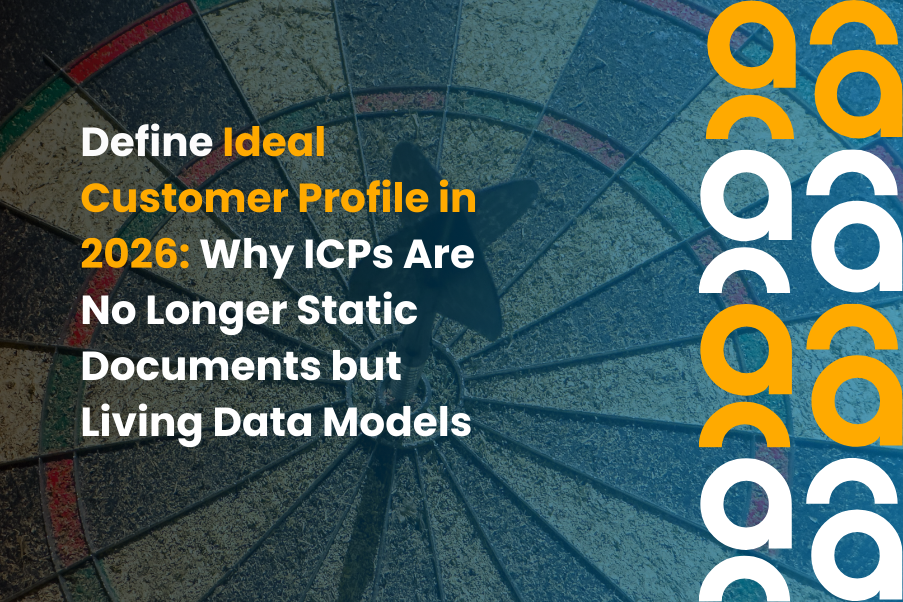 Define Ideal Customer Profile in 2026: Why ICPs Are No Longer Static Documents but Living Data Models
Define Ideal Customer Profile in 2026: Why ICPs Are No Longer Static Documents but Living Data Models -
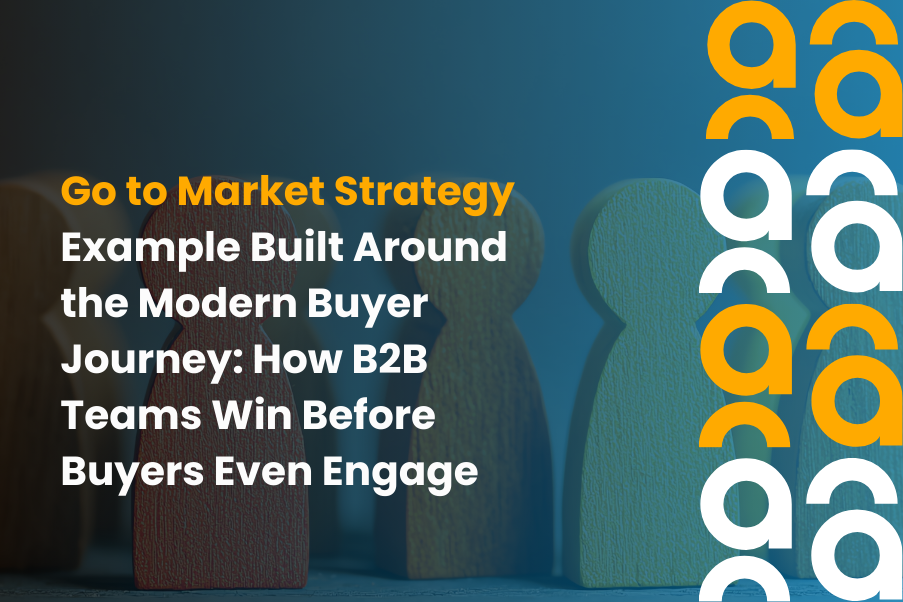 Go to Market Strategy Example Built Around the Modern Buyer Journey: How B2B Teams Win Before Buyers Even Engage
Go to Market Strategy Example Built Around the Modern Buyer Journey: How B2B Teams Win Before Buyers Even Engage -
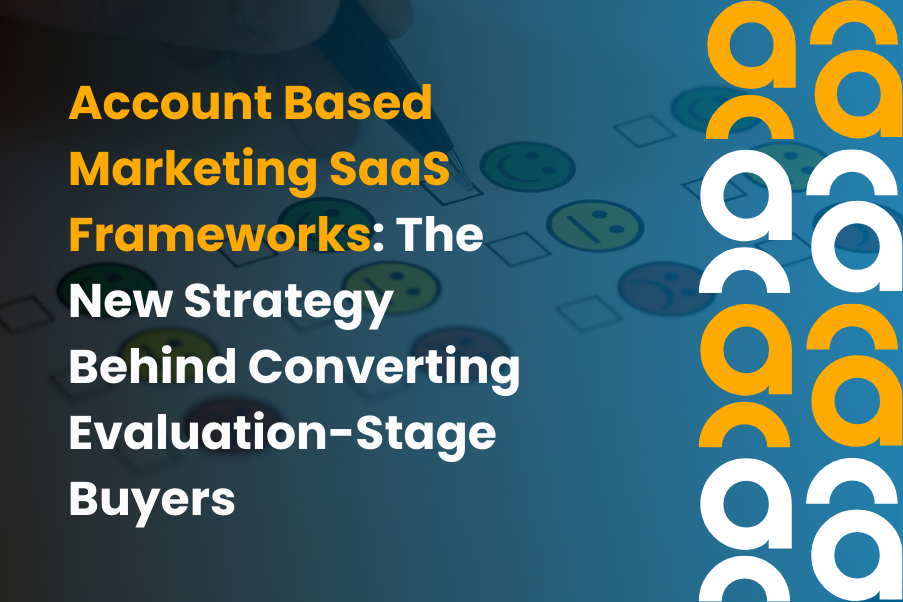 Account Based Marketing SaaS Frameworks: The New Strategy Behind Converting Evaluation-Stage Buyers
Account Based Marketing SaaS Frameworks: The New Strategy Behind Converting Evaluation-Stage Buyers -
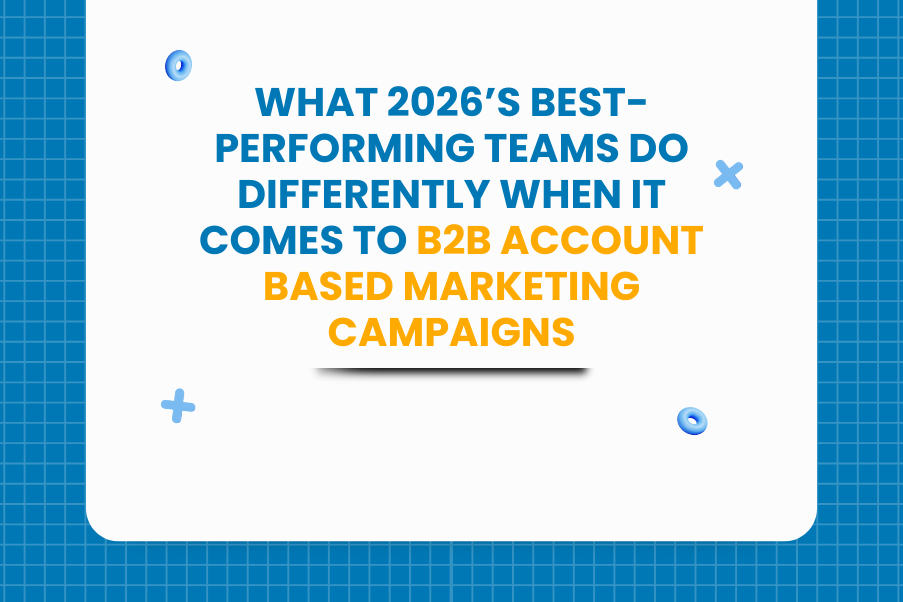 What 2026’s Best-Performing Teams Do Differently when it comes to B2B Account-Based Marketing Campaigns
What 2026’s Best-Performing Teams Do Differently when it comes to B2B Account-Based Marketing Campaigns -
 B2B Account Based Marketing in an Over-Messaged World: The Rise of Context-First Personalization
B2B Account Based Marketing in an Over-Messaged World: The Rise of Context-First Personalization

